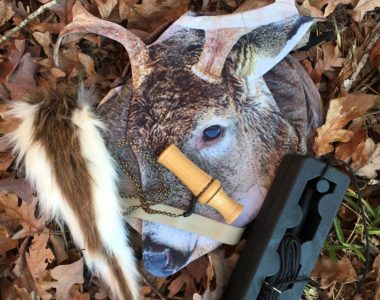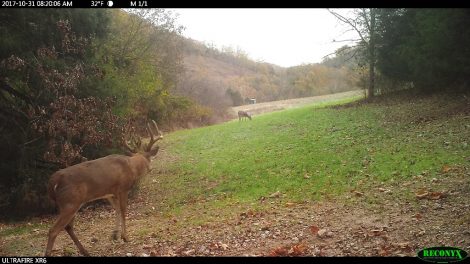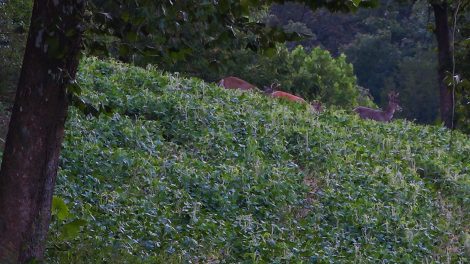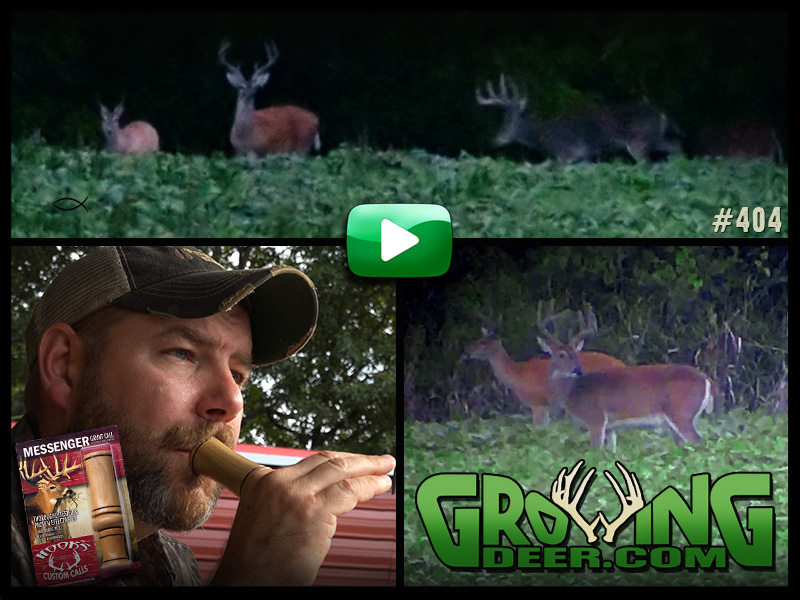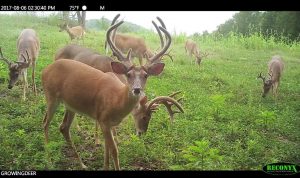Category: Hunting Tactics
Hunting the Rut: Tactics for Tagging Head Turner – Episode #419
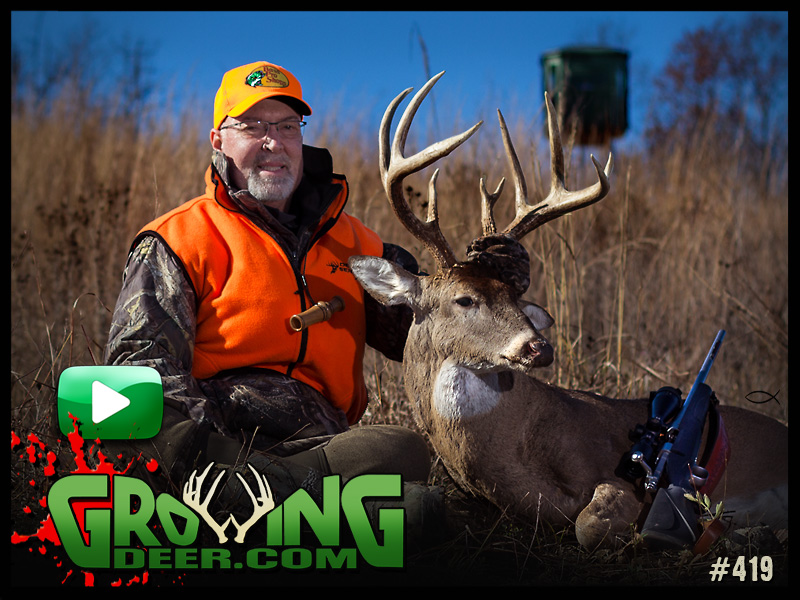 New Video
New Video
It is the rut and Grant’s hunting a mature buck! Learn how Grant adjusted his hunting strategy specifically for the rut. The plan worked and Grant tagged one of our top hit list bucks, Head Turner!
SPECIAL OFFER:
Montana Decoy is offering the perfect gift or starter pack for any deer hunter! Includes Freshman Decoy, Teaser Tail, Rattle Cage by Rocky Mountain Hunting Calls and Messenger Grunt call by Hook’s Custom Calls. Only at Montana Decoy.
new weekly blog:
Wanting to spice up your meals and try something different? Here
is a standard recipe for jambalaya with a few modifications to make
it work with venison!
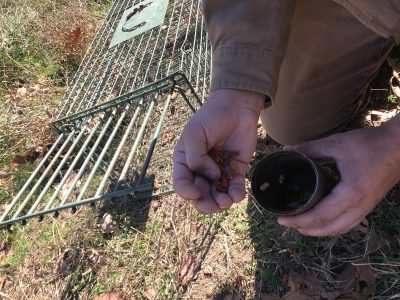
Tip of the Week:
Cat food is a cheap, meaty-smelling bait that works great for trapping nest predators such as raccoons and opossums.
Hunting Kansas: Tips for A Hang and Hunt – Episode #416
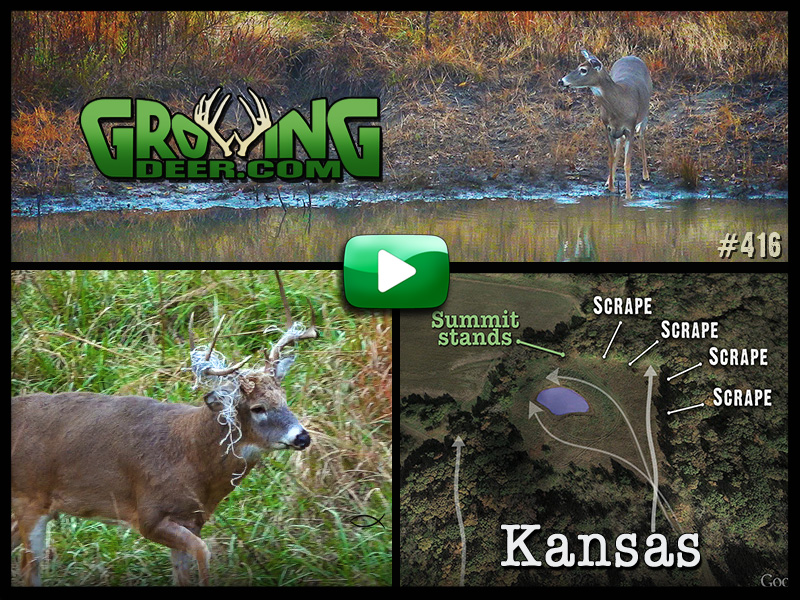 New Video
New Video
It’s prime time for hunting, so Grant heads to Kansas in search of a buck! Watch as Grant and Daniel scout, hang, hunt, and encounter multiple bucks! Then see Pro Staff member James Harrison get on the board!
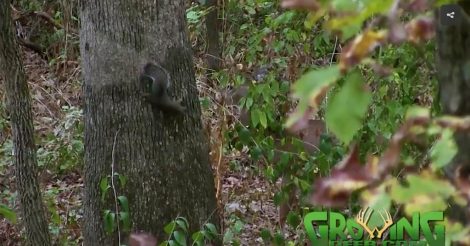 Short Clip:
Short Clip:
Watch as a young buck and a squirrel play what looks like a game of hide and seek!
new weekly blog:
In this blog, Grant shares strategies for hunting bucks during the rut!
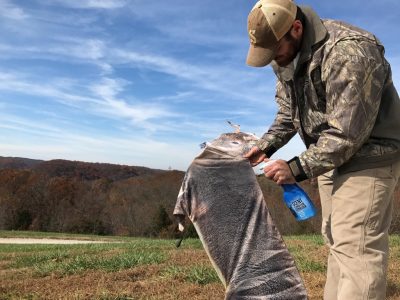
Tip of the Week:
Controlling scent on decoys can be key to luring deer into range!
Hunting Strategies For The Rut: Bottlenecks, Pinch Points And Travel Corridors
This year has been the best for hunting the pre rut that we’ve seen in several years! Hunters in a wide range of states (Kansas, Arkansas, Kentucky, Iowa, Nebraska, Missouri, and more) have shared how they are seeing more deer than previous during the pre rut.
This most likely will change in a matter of days. Bucks don’t need to move much during the peak of the rut. This is when the highest percentage of does are receptive and bucks don’t have to travel far to pair up with a doe. Once with a receptive doe bucks often tend her for 24-36 hours. Often, neither the buck nor doe will travel far during this time.
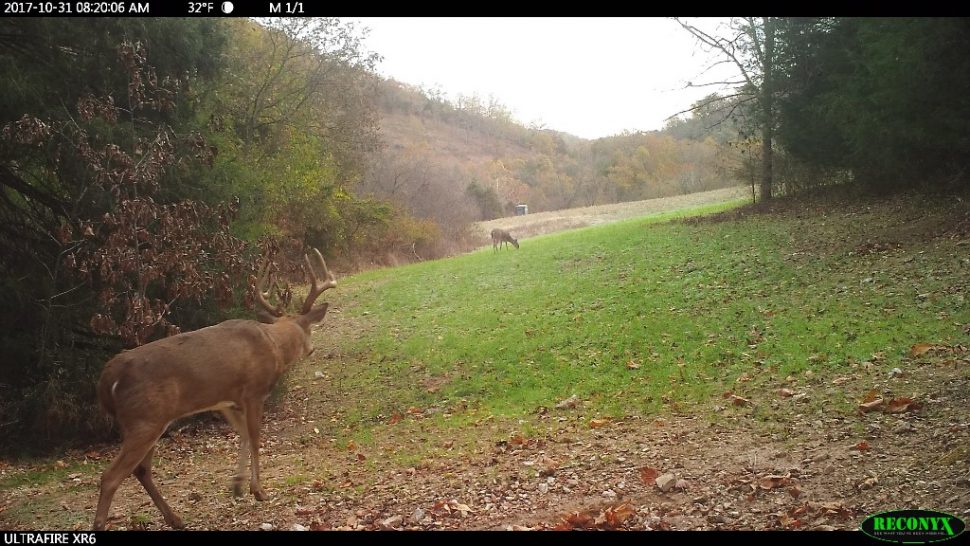
Southpaw, a 6 year old buck, is on our hit list.
During the chase phase of the rut bucks aren’t following a food/cover pattern. They are moving throughout their home range in areas they believe they have the best chance of finding a receptive doe.
Hunting stands that were placed overlooking scrapes will not be my first choice at this time. Why? Because bucks or does rarely use scrapes during the peak of the rut.
Bucks and does tend to abandon most scrapes during the chase phase of the rut. It seems bucks don’t wish to spend energy checking and/or maintaining scrapes when checking the wind often yields much better results of finding a receptive doe.
During the rut bucks will focus primarily on checking scrapes that are in a travel path between areas they will be seeking does. If I find scrapes that are maintained during the chase phase of the rut that can be a key stand location!
It is important to think about how bucks will be traveling during the rut. Research has shown that bucks will be up and on their feet, moving up to 4X more than the “normal” distance. This is the time to hunt bottlenecks, pinch points and travel corridors.
As always, there’s usually more deer activity just before and after a strong cold front so I’m always watching the weather forecast!
Enjoy Creation,
Grant
Where to hang that stand? – Episode #407
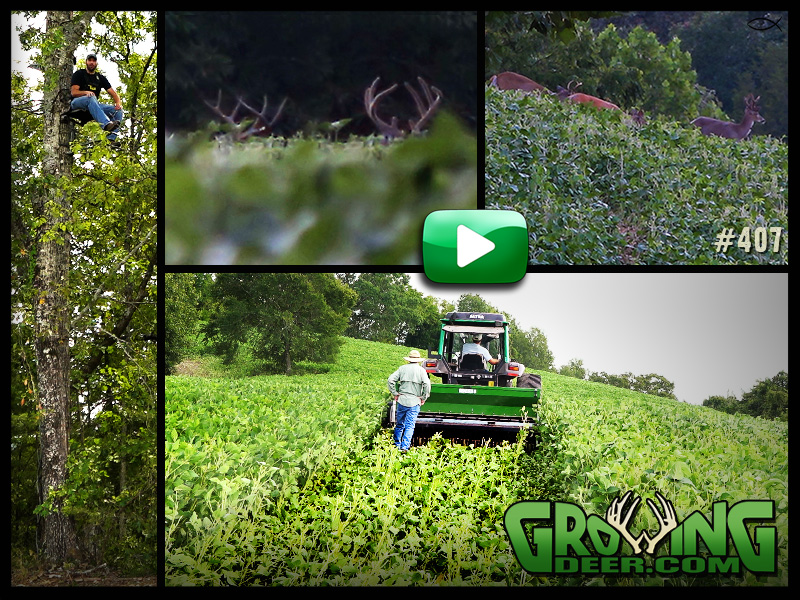 New Video
New Video
With a new food plot created and planted, the GrowingDeer Team sets out to find the best tree to hang a Summit Stand! See how we select a hunting location to approach, hunt and exit without alerting deer. In addition, Grant shares one of his favorite food plot techniques to ensure that deer have quality forage during both the warm and cool days!
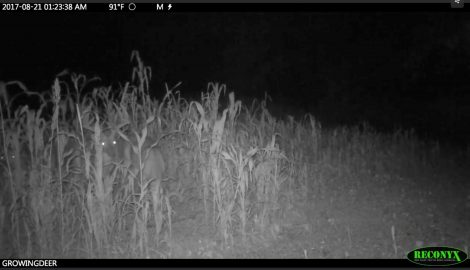 Short Clip:
Short Clip:
Louie is one of the top hit listers at The Proving Grounds but we think he may be hard to see this season. Can you find Louie in this Reconyx clip?
New Weekly Blog:
The color of a deer’s coat during the early season can help hunters select stand sites. Read this week’s blog to find out why knowing the daily temperatures and a deer’s coat color could help you become a more successful hunter this season!
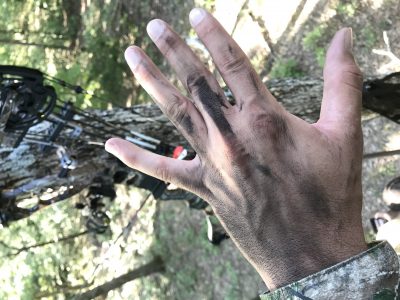
Tip of the Week:
Your hands are often the most exposed. If you don’t wear gloves, black face paint is a great alternative to help break up the color and make movement harder to detect.
Deer Hunting Strategies: Scouting For The Coat?
Many deer hunters are now busy scouting for deer season. When you’re scouting you should not only pay attention to where the deer are, but what they look like. Specifically, what does their coat look like? Pay attention to those trail camera images. Do they reveal deer that suddenly have spots of red and brown hair? Do the coats of these deer appear shaggy and unhealthy? This small detail can yield big dividends when planning where to hang your next stand. Read on to understand why.
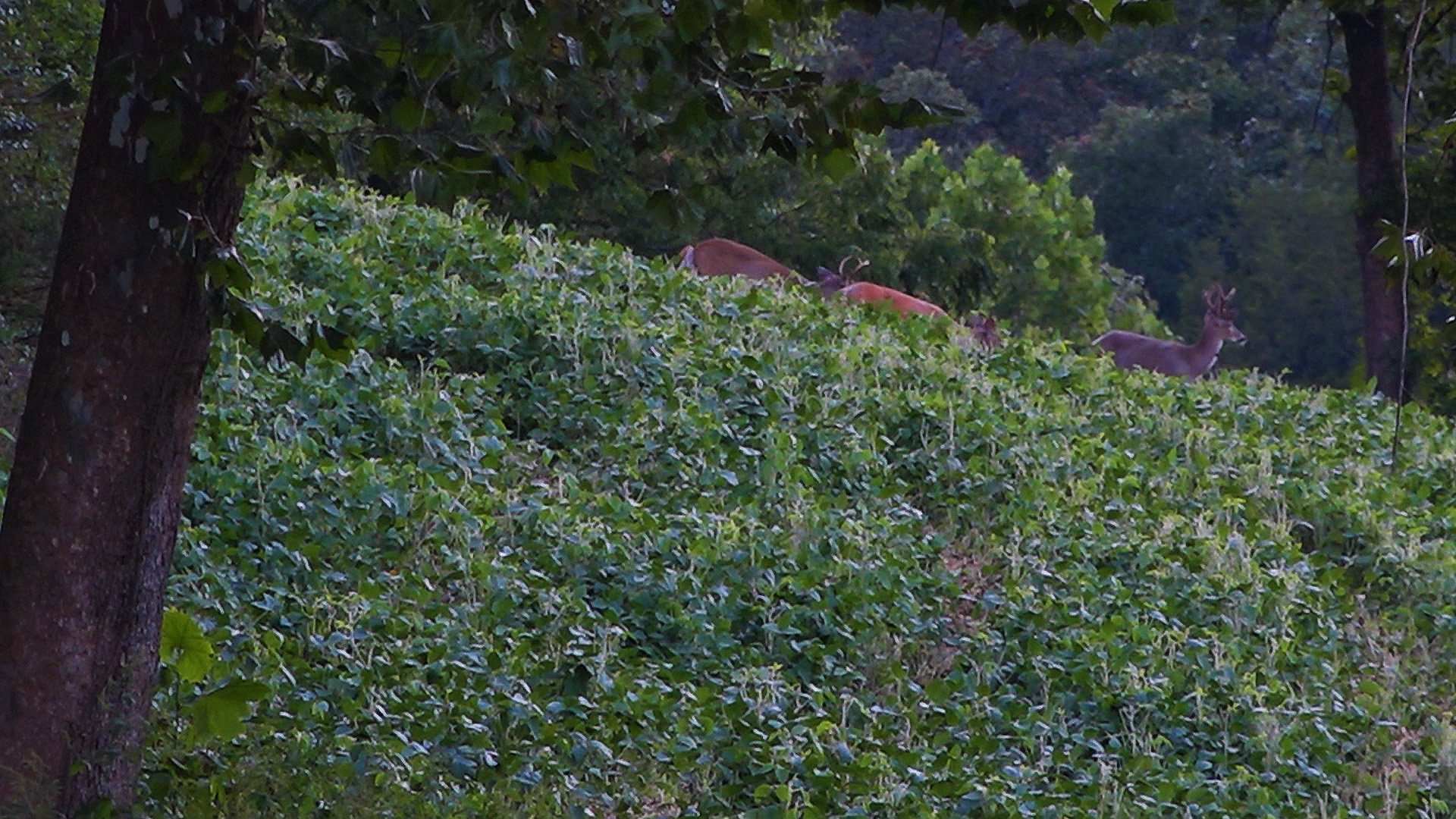
White-tailed deer appear this way because deer molt or shed their hair twice a year. This time of year the short reddish hair falls out and is replaced by longer gray hair. The short reddish hair was their summer coat. The reddish or lighter color hair reflects the sun’s energy compared to the darker winter hair which absorbs the sun’s energy in the form of heat.
During the spring the opposite is true. During late March (typically, depending on location) deer shed the darker gray, longer hair and replace it with the thinner, shorter reddish hair. The timing of molting seems to be trigged by factors other than current conditions.
This information can be used by hunters to pick stand locations during the early season. For example, let’s assume deer where you hunt have already started getting their winter coat and the temperatures are still warm or warmer than normal. Deer won’t move much during daylight hours and will bed in areas where they can stay cool during these conditions. This means deer will likely bed on north facing slopes or in shady areas where there’s a breeze. They probably won’t move much during the heat of the day and will typically arrive at food sources just at dark or later.
You can use this information to select stand sites based on the deer’s coat color and daily temperatures in your area. Understanding this simple biology can make you a more successful hunter!
Let us know what you are seeing by posting on our Facebook page! It’s a great way to get into conversation with other deer hunters.
Growing (and hunting) Deer together,
Grant
Grunt Calling! Get Tuned Up! – Episode #404
New Video
Grant and Daniel take advantage of velvet bucks feeding in soybeans and scout for hit list bucks! We catch up with James Harrison to learn more about one of our most important deer hunting tools – the grunt call! Plus, find out what new habitat projects the GrowingDeer Team have started!
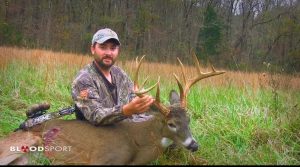 Short Clip:
Short Clip:
“Bonus” bucks are always great! Watch as Chase White grunts in a great bonus buck and punches his 2016 tag!
New Weekly Blog:
Trail camera surveys are a great tool for gathering important herd information. This can help managers/hunters better manage their herds and create hunting strategies for the upcoming season. Find out more in the blog!
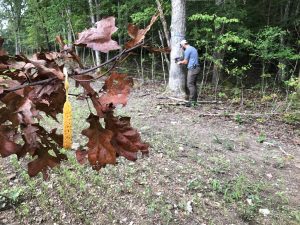
Tip of the Week:
Mock scrapes and synthetic scent can be a great way to monitor bucks on trail cameras, even during the early season!
Trail Cameras: A Great Tool For Deer Hunters
Deer hunters across the nation are gearing up for the upcoming deer season. For many hunters, gearing up also includes getting a better idea of the bucks and does that are on their hunting property. A trail camera survey has been shown to be the most accurate method to determine the number of deer, the age class of bucks, and the number of fawns per doe on a specific property. If you are interested in running a trail camera survey on your deer herd, see the detailed instructions of how to conduct a trail camera survey.
The first step for a hunter to get more familiar with his deer is to place trail cameras out. We always put ours near attractants or overlooking a food plot. That’s the easy part of conducting a trail camera survey. Pulling the cards and looking at all the deer pictures is fun! For a trail camera deer survey, looking at each picture close enough to uniquely identify each buck can be very labor intensive. We usually end up looking at the same pictures many times to confirm the buck is the same (or different) as in other pictures. Antlers are unique, like fingerprints.
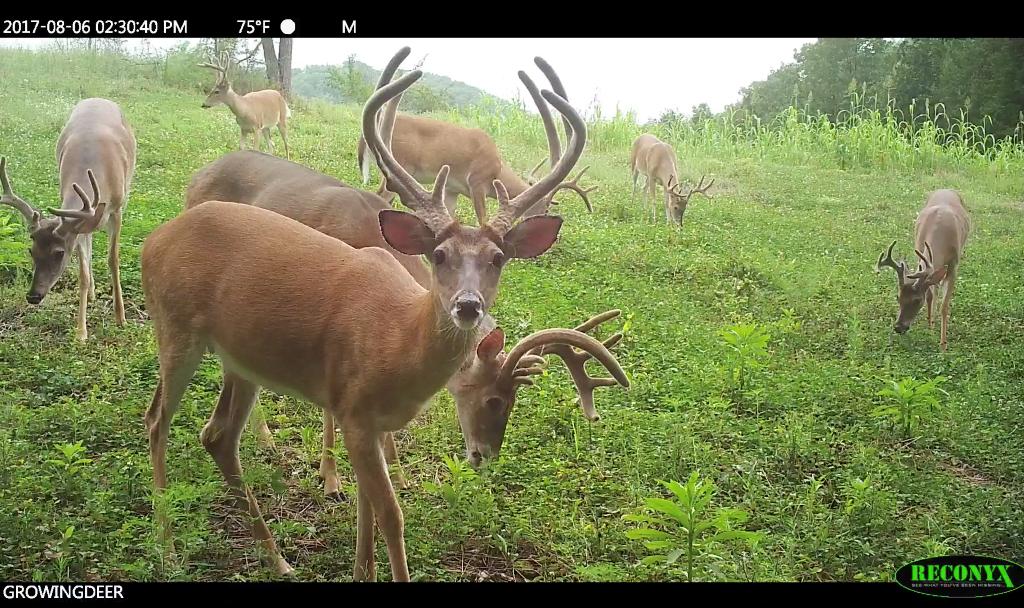
A very accurate estimate of the total population and herd demographics can be obtained after identifying each individual buck, the number of times that buck was photographed, and the total number of does and fawns appearing in the pictures.
With the hard work completed, there’s still more valuable information that can be gained from these photos! Pay very close attention to which mature bucks tend to be more active during shooting light! Those bucks will usually be much easier to tag than bucks that only show up at camera sites after dark.
I also pay close attention to how the bucks, especially mature bucks, respond to each other. I look for mature bucks that are more active during daylight than other bucks AND show signs of being aggressive at the camera site. One sign can be the buck is usually the first to show up among other bucks in the bachelor group. The aggressive bucks are often photographed chasing other bucks away from the camera site.
These aggressive bucks tend to respond much better to grunt calls, rattling and decoys. I’ll gladly spend my time hunting for an aggressive buck versus a buck that has larger antlers but shows sign of being totally nocturnal. Such bucks may be practically impossible to hunt and harvest – at least that year.
If a trail camera deer survey seems a little intense for you, switching your cameras into scouting mode can be very rewarding, especially if you are hunting in a state that has an early bow season, like Missouri. At this time, the summer bachelor groups have begun busting up and mature bucks are typically changing their patterns from a food-cover, food-cover routine to a bit of overt dominance hierarchy sorting out.
This means that some bucks will shift to using other parts of their home range to avoid frequent conflict. Their movement and behavior patterns are changing rapidly during this time of year, which means that M.R.I. (Most Recent Information) is critical, but difficult to obtain. Information a week old can be out of date this time of year. This makes selecting stand/blind sites tough.
To stack the odds in my favor I use a combination of M.R.I., past history, and knowledge of food preference when deciding where to place my stands/blinds. For example, a recent Reconyx image (within few days) of a buck on my hit list, combined with knowledge that a mature buck has used that area in the past, and knowing what the current preferred food sources are during the first week of archery season is enough data for me to select and hunt a specific location.
Don’t leave your trail cameras in the closet or sitting on the garage shelf! Get out in the woods and put those trail cameras to work!
Growing and hunting deer together,
Grant
Strategies For Hunting The Wind – Part 2
Deer hunting on flat ground has advantages that include producing better quality forage so bucks can express more of their potential and being able to predict the prevailing wind direction while having fewer thermals. Hunting the wind correctly can be a deer hunter’s primary strategy for successfully harvesting deer, especially mature bucks that have reached an older age because they learned to avoid predators.
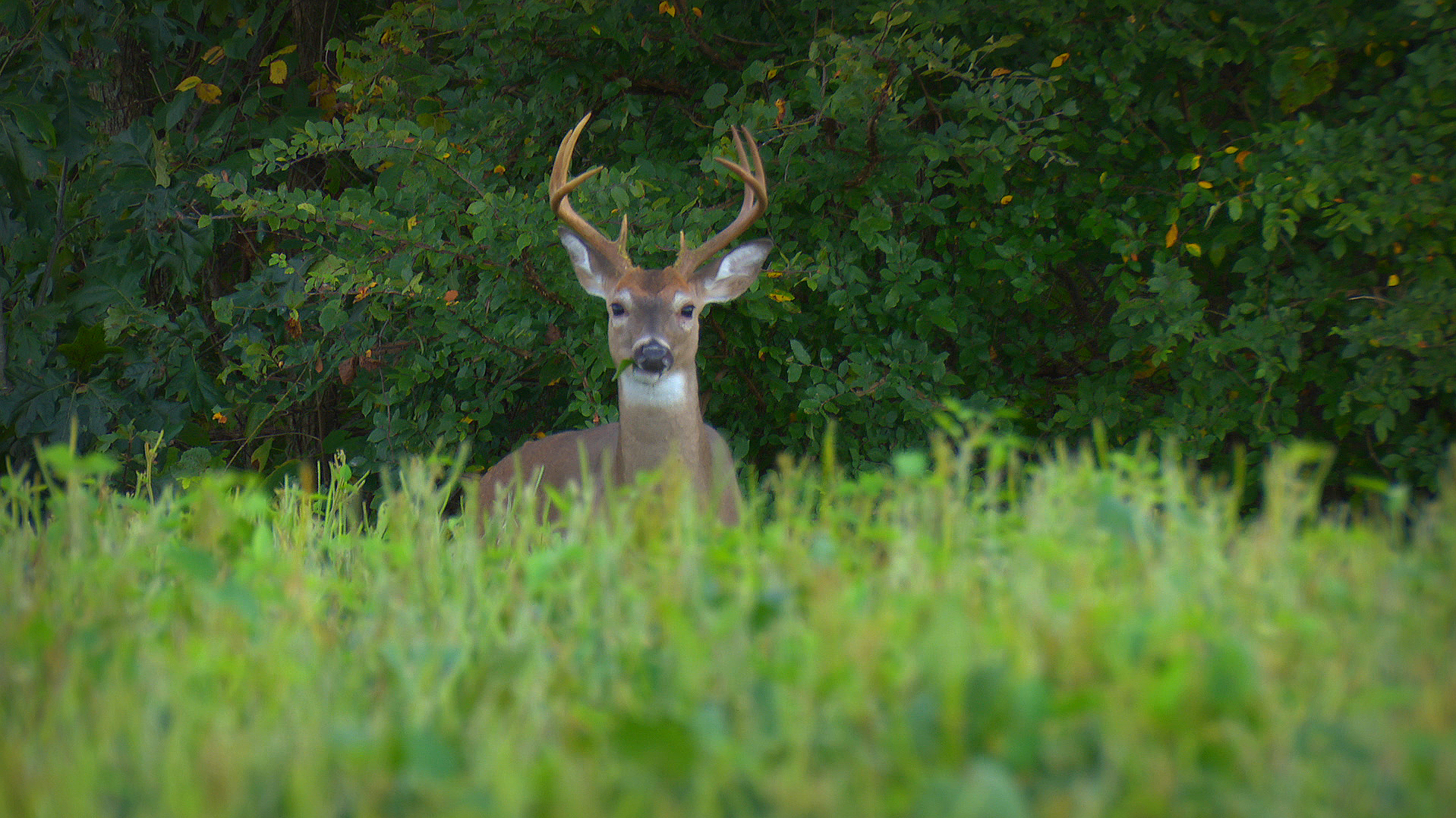
Hunting the wind correctly reduces the chances of alerting deer. Deer that are alerted repeatedly tend to avoid those areas during daylight hours. I recommend avoiding alerting deer when possible. This may mean moving your stands off food sources and closer to bedding areas.
Remember alerting deer during your approach and exit are just as damaging as alerting them while you are hunting. Plan your travel routes carefully. Here are a few strategies that I use in various hunting situations:
- In the pre-season I try to locate at least four good stand/blind sites. One for each possible wind direction. This allows me to hunt during almost all conditions. It’s okay to have multiple stands/blinds overlooking the same area but for different winds. I’d much rather setup with a crosswind. I call this threading the needle. My best hunts are often when the wind is such that I feel I’m on the edge of getting busted. I’ve experienced good success of mature bucks responding to grunts and coming into bow range using this strategy.
- It’s tough to set up near bedding areas. I try to find a location with a crosswind. That is to say the wind and thermals carry scent away from the bedding area and travel route where deer enter and exit the bedding area. Such setups are very difficult to find. If this setup isn’t available where you hunt then the next best situation is to setup for either only morning or afternoon hunts so the direction of deer travel can be forecast with some accuracy. This often means that the wind is blowing toward the bedding area in the morning or away from it during the afternoon.
- I like a favorable wind even when I’m hunting in an enclosed Redneck Blind. I often use the screen window frames and cover them with a thin clear film (like a clear plastic cooking wrap). I open the window I will shoot a bow out of and put the wrapped frame in the opening. I’ve tested shooting a broadhead through the wrap and my arrow flies great! I’ve had deer downwind in this scenario without getting busted.
- When hunting during the rut with a normal or colder than normal temperature and wind at least seven miles per hour consistently from one direction, I’ll hunt all day. If the temperatures are warmer than normal and/or the wind is mild and/or swirling, I’ll usually only hunt the early morning and late evenings when the thermals are predictable. You may wish to watch GrowingDeer #309. This shows an actual setup that I prepared for gun season using a crosswind to hunt two bedding areas and a feeding area.
- Hunting from the ground is an exciting way to hunt but keep the wind in your favor. If the wind shifts either leave or change. Check the wind constantly. Often it’s best to time the hunt/approach of an area to occur just before or after you expect deer to be there. For example, stalk (with the wind in your favor) to a feeding area and arrive ten minutes before dark. This significantly reduces the chances of the wind swirling, etc. It’s not spending hours in the woods – it’s being at the right place at the right time. When hunting from the ground, rarely is the direct route the best route. Consider thermals and wind shifts due to topography, etc. Deer will avoid locations where they have been alerted or associate with danger.
- Scent carries better during moist than dry conditions. So we rarely hunt from stands where the wind is likely to swirl when the humidity is high. During high humidity conditions we are more likely to select stand locations on ridgetops or areas where the wind is not blocked by vegetation or topographic features. At such locations the wind is much less likely to swirl.
I hope that using these strategies help you tag a deer this season – especially that mature buck you’ve been chasing for years!
Hunting and growing whitetails together,
Grant
Strategies For Hunting The Wind – Part 1
Two weeks ago I shared the advantages of flat ground to produce mature bucks. That discussion was more about the ability to produce quality forage and therefore quality bucks (if they are allowed to mature). There is another substantial advantage to flat ground. It may be the best reason to seek a hunting property that is flat versus steep.
The huge advantage of hunting flat ground is that the wind seldom swirls where the topography is flat. The wind does change directions as fronts pass, etc., but it rarely swirls and certainly doesn’t swirl on a constant basis. Swirling winds are often caused by changes in topography. Changes in topography create eddies where the wind sinks and rises. Rapid changes of topography also create temperature gradients (warm air rises and cool air sinks). These temperature gradients cause thermals or air moving based on slope and temperature.
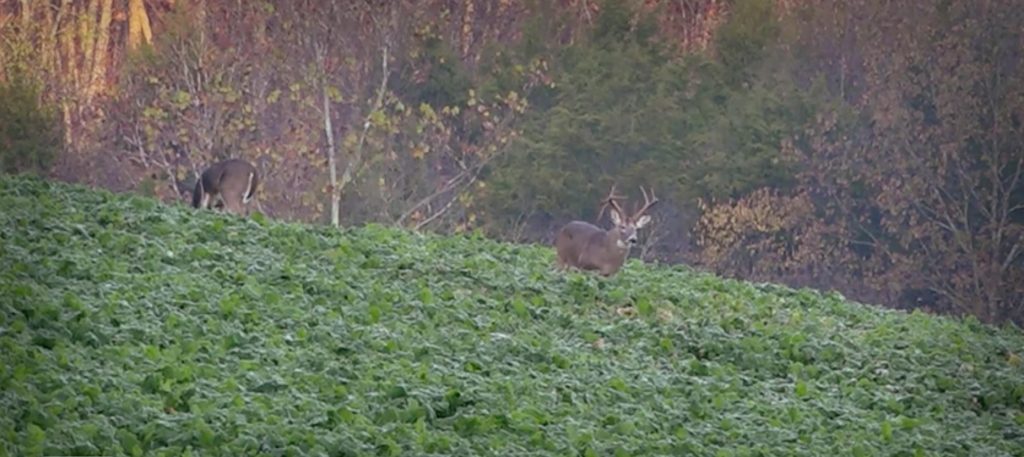
Mature bucks use both the terrain and how air moves across the terrain to help them avoid predators.
Deer move the most during dawn and dusk. There is more air movement due to thermals during these time periods because this is when the temperature is changing the most. It may well be that in areas with steep topography, deer are the most active during dawn and dusk to take advantage of swirling winds to aid avoiding predators (two and four legged). Swirling winds and thermals allow deer to detect predators from multiple directions not just one (like what would occur in areas where the wind is typically out of one direction). There can be some thermal action in flat country. However, the direction and duration of the thermals seem to be much more predictable compared to areas with steep topography.
Most hunters throughout the whitetails’ range have access to hunt flat ground. My property is the opposite of flat. In fact, it changes elevation 350+ feet several times due to ridges and creeks. To reduce the chance of being detected by a buck’s nose I use a complete system of cleaning my gear and good personal hygiene, including doing laundry for better deer hunting.
I have and still do spend hours pondering how deer use the wind! I make no claims that I’ve figured that out yet. In general, deer like to move with the wind in their advantage. However, what is “in their advantage?” Is it in front of them so they can detect threats before they approach an area or is it when the wind is behind them and they can detect threats that might approach from the rear?
Deer obviously move in all directions in relation to the wind. If the wind remains out of the north for a week, they don’t end up traveling miles and miles north simply because they wanted to keep the wind in their face. I think deer are much more sensitive to thermals and minor wind currents than most hunters realize. Hunters, myself included, seem to get hung up on the general wind direction. I believe deer avoid two and four legged predators by paying attention to thermals (air moving up or down in elevation because of temperature gradients). These thermals can occur due to slope, shade/sunlight patterns, etc.
There are several advantages to hunting flat ground. These advantages include producing better quality forage so bucks can express more of their potential and being able to predict the prevailing wind direction while having fewer thermals. These are two huge advantages to any deer hunter. Next week: specific strategies for hunting and using wind to your advantage.
Growing Deer together,
Grant
How Bottlenecks Help Deer Hunters Be More Successful
What are bottlenecks? They are physical barriers that limit deer movement to a relatively small area. You might call these features pinch points, funnels, etc. Typically, the longer the barrier the more utilized the bottleneck.
Cropland in the Midwest is full of bottlenecks. Wide open crop fields, especially after the crops have been harvested, tend to funnel buck movement into narrow wood lots or CRP fields. Where the whitetails move is much more predictable in those areas compared to land that is basically one habitat type (e.g. all woods). To put the odds in your favor, scout and hunt those bottlenecks. Now you are in the best location to observe the increase in deer activity.
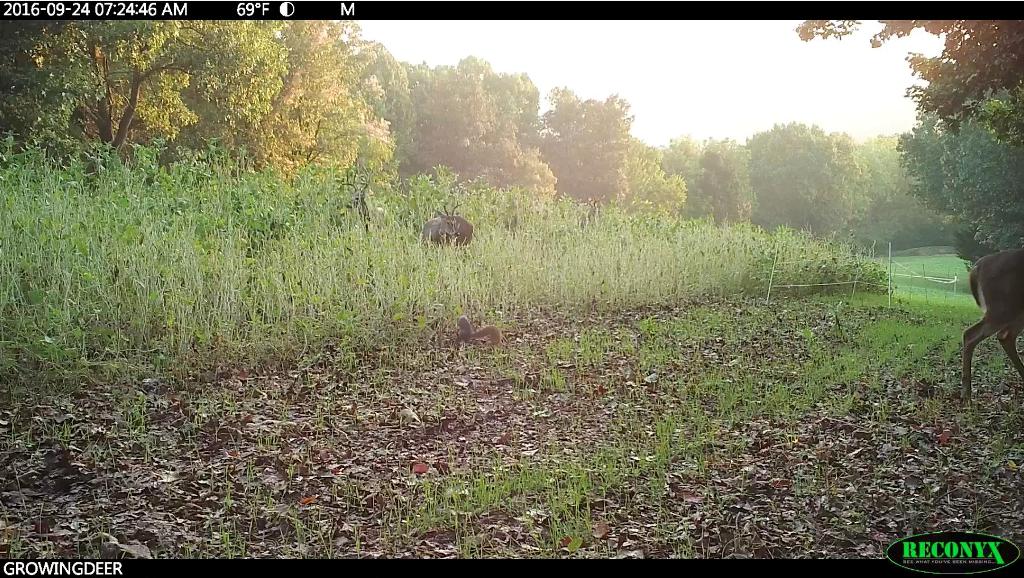
My property is large patches of hardwoods with a few food plots mixed in. It is very tough to pattern where bucks will travel on my property with any certainty. This is called homogenous habitat. My property is also mountainous habitat. Hunting areas like these require hunters spend the bulk of their time scouting – looking for fresh sign and general travel routes. Within these travel routes concentrate on bottlenecks such as steep saddles in the mountains or bluffs that force deer to travel within a specific area. These areas will provide quality hunting unless the deer sense danger and change their patterns.
If your hunting grounds have few bottlenecks (or pinch points) don’t worry! Bottlenecks can be created! I’ve used discarded round bales of hay, snow fence, etc. Sometimes low value trees can be felled to make bottlenecks. I don’t like this approach as well as others because trees tend to decay rapidly and it’s tough to fell trees in a line with no gaps.
If you are like me and primarily hunt areas where there are very few natural bottlenecks, consider using a readily available resource and creating some. Consider how to approach the stand, wind direction, etc.
Bucks are not very predictable during the rut. I suggest hunters study an image of the property and look for bottlenecks if they can’t get boots on the ground without disturbing the deer or if they are hunting public land. I like stands by ponds as they act as a barrier and create a bottleneck. Deer will swim ponds, but don’t want to unless forced. Look for the largest pond on the property. See if there’s sign and a potential stand/blind location where the wind will carry your scent across the pond. Additionally, hunting a bottleneck such as a downed fence or saddle between doe bedding areas is a great stand location during the rut as bucks troll between those areas searching for hot does.
It can be very difficult or impossible to pattern a buck in areas where there are acorns almost everywhere. If there are no obvious bottlenecks I hunt the most sign that can be approached without alerting deer.
It’s often easier to grow mature bucks than it is to harvest mature bucks. Creating a bottleneck is an outstanding tool to reap the benefits of your deer management efforts.
Growing (and tagging) Deer together,
Grant



